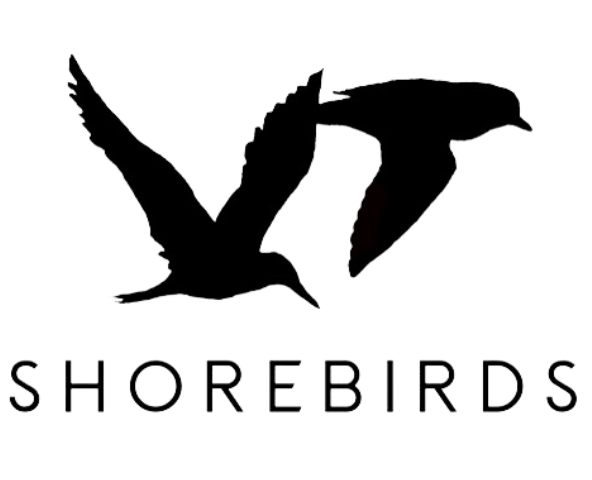A flock of red knots flushes on the eastern shore of Virginia. Photo: B. Truitt
Red knots in virginia
More than 50% of the U.S. population lives along the coast. Development of our coastline threatens diverse ecosystems upon which humans and wildlife depend for clean water, food, and protection from storms. Long distance migratory shorebirds that stop along the U.S. coast serve as sentinels to changes in the quality of coastal ecosystems. These shorebirds are highly sensitive to anthropogenic changes in their stopover habitat where they have limited time to replenish their fat reserves before continuing to Arctic breeding or South American wintering sites. Many migratory bird populations around the globe are experiencing rapid declines.
The red knot (Calidris canutus rufa) exemplifies the problem. This species winters in South America and migrates to the Arctic to breed, stopping on the mid-Atlantic Coast to refuel. The red knot population has declined precipitously. As such, it is a Candidate for listing under the Endangered Species Act. The ability to determine which factors are contributing to the red knot decline would increase our understanding of the global shorebird crisis.
It is important that we reverse shorebird declines, including that of the red knot, for several reasons: the birds, and their unique and awe-inspiring long-distance migration which has immense aesthetic appeal, are in danger of being lost forever, shorebirds are important to the economy of coastal communities, bringing in > $20 million in annual eco-tourism revenue in the Delaware Bay region alone, and conservation of shorebirds promotes responsible coastal development that will benefit other economic and cultural resources upon which humans depend.
Currently, many fisheries, recreational beaches, energy development, and other human activities on the coast are either restricted to protect imperiled shorebirds or are under intense interagency scrutiny. Shorebird population management must be a part of any integrated approach to coastal planning, but many aspects of shorebird biology are still poorly understood.

